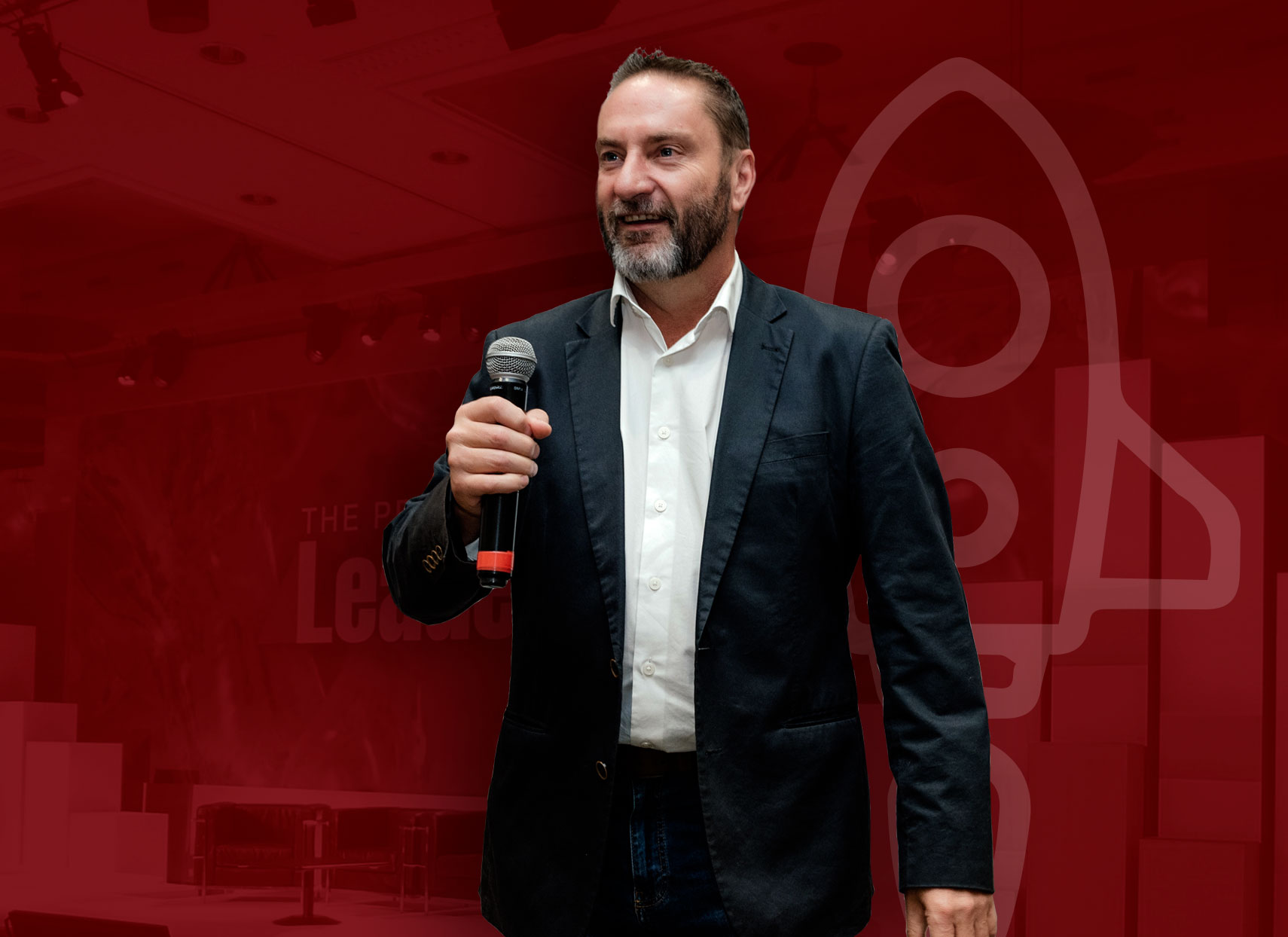Early in my corporate career, I stood in front of a conference room full of senior executives, completely blanked on my opening line, and watched my carefully rehearsed presentation crumble in real time. My face flushed bright red, my ears were literally glowing, and I started sweating profusely.
That disaster became my turning point.
Public speaking anxiety affects roughly 75% of the population, yet we’re often told to “just get over it” or “picture everyone in their underwear” (terrible advice, by the way).
After bombing that presentation, I embarked on a learning journey of what actually works. I’ve discovered that overcoming speaking anxiety isn’t about eliminating nerves – it’s about redirecting them.
Now I train executives, sales teams, and entrepreneurs to do the same. These aren’t feel-good platitudes – they’re battle-tested strategies that work when your career depends on it.
1. Preparation Is Your Insurance Policy (But Don’t Over-Prepare)
Here’s what nobody tells you about preparation: there’s a sweet spot. Under-prepare and you’ll panic. Over-prepare and you’ll sound robotic.
I learned this the hard way when I memorised a 45-minute presentation word-for-word, then completely froze when someone asked an unexpected question 10 minutes in. Now I use what I call the “flex framework”:
Master your structure (beginning, middle, end) but keep your language conversational. Know your key points cold, but leave room for natural flow. I practice my openings and closings until they’re bulletproof – everything else gets outlined, not scripted.
The 3×3 rule: Practice your opening three times, your closing three times, and run through the whole thing three times out loud. Any more and you risk sounding like a robot. Any less and you’re gambling.
Most importantly, prepare for what can go wrong. Tech fails, difficult questions, hostile audiences (I’ve experienced them all) – when you’ve mentally rehearsed these scenarios, they become manageable bumps instead of derailments.
2. Breathe Like Your Career Depends on It
During my presentation disaster, I was taking these tiny, shallow breaths that made everything worse. Your brain needs oxygen to function, especially under stress.
The technique that saved me came from a Navy SEAL instructor I worked with: Box breathing. Inhale for 4, hold for 4, exhale for 4, hold for 4. I do this for two minutes before every presentation, and 30 seconds between key points if I need to reset.
But here’s the part most anxiety advice gets wrong—don’t try to eliminate the physical symptoms entirely. That flutter in your stomach? That’s adrenaline, and it can work for you. Channel it into energy and presence instead of fighting it.
3. Visualise Failure, Then Success
Everyone talks about positive visualisation, but I start with something different: I imagine everything going wrong, then I imagine how I’d handle it. Microphone cuts out? I project my voice. Slide deck crashes? I tell a story instead. Hostile question? I acknowledge it respectfully and redirect.
Once I’ve mentally solved the worst-case scenarios, then I visualise success. Not a perfect presentation – a real one. I see myself connecting with individuals in the audience, handling questions smoothly, maybe even getting a genuine laugh at the right moment.
This isn’t wishful thinking – it’s mental preparation. When you’ve already “experienced” both failure and recovery in your mind, the actual event feels familiar instead of terrifying.
4. Make It About Them (Seriously, This Changes Everything)
The shift from “What do they think of me?” to “How can I help them?” transformed my speaking overnight.
I remember presenting to a room of sceptical procurement managers who clearly didn’t want to be there. Instead of worrying about impressing them, I focused on one simple question: “What’s the one thing they need to hear that would make their jobs easier?”
Suddenly, I wasn’t performing – I was solving problems. The anxiety didn’t disappear, but it became background noise instead of the main soundtrack.
Practical tip: Before any presentation, write down three specific problems your audience faces. Structure your entire talk around solving those problems. When you’re genuinely focused on serving them, self-consciousness fades.
5. Start Stupidly Small
After my big failure, I didn’t jump back into high-stakes presentations. I started with our monthly team meeting of eight people. Then a client call with 15 participants. Then a department meeting.
Each small success built what psychologists call “self-efficacy” – your belief in your ability to succeed. By the time I faced another large audience, I had evidence that I could handle pressure.
Progressive exposure that actually works:
- Week 1: Present to your pet or plant (sounds ridiculous, works brilliantly)
- Week 2: Record yourself and watch it back (painful but essential)
- Week 3: Present to one trusted colleague
- Week 4: Small team meeting
- Continue building from there
The key is consistent practice, not perfect practice. Every time you speak and don’t die, your brain updates its threat assessment.
6. Rewrite Your Internal Script
My old internal monologue was brutal: “You’re going to humiliate yourself. Everyone will see you’re a fraud. Your voice is shaking – they all notice.”
Now it sounds like this: “Your hands are shaking because you care about doing well. That energy can fuel your presentation. They want you to succeed – nobody benefits from watching you fail.”
This isn’t positive thinking BS. Cognitive behavioural therapy research shows that realistic, compassionate self-talk directly reduces cortisol levels and improves performance. The goal isn’t to lie to yourself – it’s to become your own ally instead of your harshest critic.
7. Hook Them in the First 30 Seconds
Nothing kills anxiety faster than early engagement. When you see heads nodding and eyes lighting up in those first moments, your nervous system gets the message: “We’re safe. They’re with us.”
My go-to openings:
- The unexpected stat: “Raise your hand if you’ve ever called in sick to avoid giving a presentation. You’re in good company – it’s more common than food poisoning.”
- The shared struggle: “Have you have ever had a brilliant idea in the shower, then completely butchered explaining it in a meeting five hours later?”
- The specific story: Not “many companies struggle with this,” but “Last Tuesday, a client told me…”
Generic openings (“Thank you for having me today”) waste your most precious moments. Those first 30 seconds determine whether your audience is with you or checking their phones.
The Reality Check Nobody Gives You
Here’s what I wish someone had told me before that disaster so many years ago: You will mess up sometimes. You’ll lose your place, stumble over words, or face a hostile question you didn’t see coming. That’s not failure – that’s public speaking.
The difference between speakers who give up and speakers who improve is simple: the ones who improve treat every presentation as data, not judgment. What worked? What didn’t? How can I adjust next time?
Your voice has something unique to offer. The world needs your ideas, your solutions, your perspective. Don’t let anxiety keep them locked away.
How We Actually Help (No Fluff)
If you’re tired of generic advice that doesn’t work under pressure, our presentation skills training focuses on what matters: building real confidence through practice, not theory.
We work with executives, sales professionals, and entrepreneurs who need to speak with authority – whether that’s boardroom presentations, client pitches, or industry conferences.
What you get:
- Personalised coaching that addresses your specific anxiety triggers
- Practice sessions with real-time feedback (the kind that actually improves your delivery)
- Proven techniques for managing nerves that work in high-pressure situations
- Strategies for engaging different audience types (from sceptical executives to enthusiastic teams)
Your speaking anxiety has probably cost you opportunities already. Let’s make sure it doesn’t cost you any more. Contact us today.







